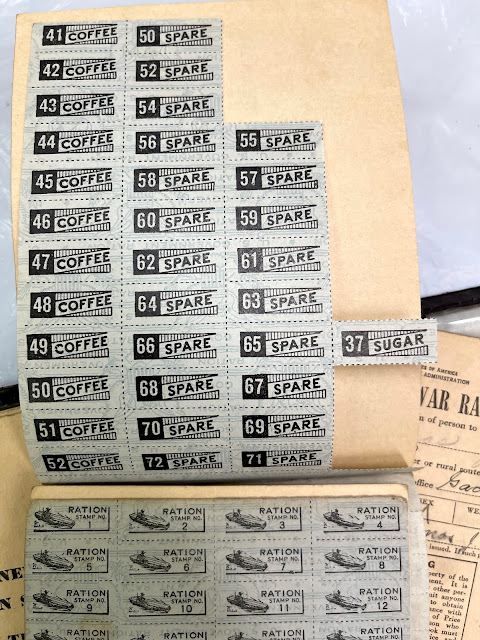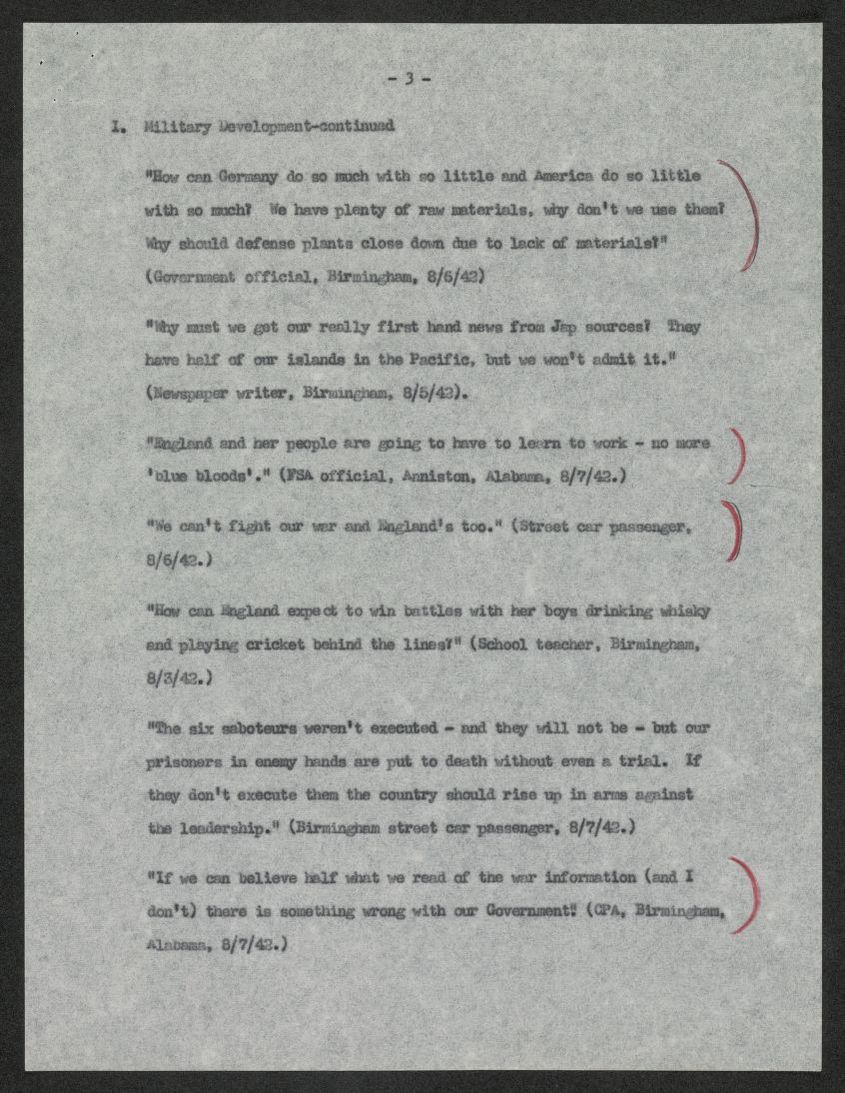Captain Abbie N. Campbell and Major Charity Adams inspect the first contingent of African American WACs sent overseas shortly after their arrival in England, 15 February 1945
Source: National Archives via National Museum of the U.S. Army
An interesting but little known unit of the American armed forces in World War II was the 6888th Central Postal Directory Battalion. This group in the Women's Army Corps was the only female, black unit sent overseas in World War II. The 855 women, officers and enlisted, were led by Major Charity Adams. Most of the members of the five companies were postal clerks, but the battalion was self-sufficient and thus had its own cooks, mechanics and other supporting personnel.
Enlistees trained in Georgia and sailed to Glasgow, Scotland, on February 3, 1945. By mid-February the unit had arrived in Birmingham, England, the location of their assignment. The women were faced with organizing unsorted mail that had been piling up in unheated hangers for as long as two years. Much of the mail had only partial names, nicknames, etc. Seven million Americans were stationed in the European Theater; 7500 were named Robert Smith. The estimated amount was 17 million items.
What was expected to be a six month task was completed in three, by May 1945. Work continued around the clock, seven days a week; each shift sorted an estimated 65,000 pieces of mail. A unique index card system using serial numbers and ultimately involving 7 million cards, was devised to deal with partial and similar names. Another batch of mail was sorted in France, before the unit was disbanded on March 9, 1946, at Camp Kilmer, New Jersey.
Although unknown to the general public at the time, the 6888th earned accolades during their service and several since. On March 14, 2022, President Biden signed a bill awarding the unit a Congressional Gold Medal. A website devoted to the 6888th includes a listing of the veterans, at least 25 of whom were from Alabama. I note two First Lieutenants among them.
I imagine each of these women had some interesting stories to tell....
UPDATE 1 August 2022
A recent article from the Associated Press by Jay Reeves profiles Romay Davis, a 102 year old veteran of the unit now living in Birmingham. She is not listed below, but is presumably the Romay Johnson listed in her home state of Virginia.
UPDATE 17 February 2022
Two other recent articles are here and here. A Netflix film about the group was also recently announced.
ALABAMA
Battle, Lillian Irma PVT;
Brown, Dorothy Elizabeth PFC;
Campbell, Abbie Noel CPT;
Campbell, Addie Lee T4;
Coleman, Willie Lee PVT;
Davis, Elizabeth Mary PFC;
Duncan, Lilian Willierob 1LT;
Edwards, Eva PVT;
Fairgood, Marcelene Lettice T4;
Fry, Ruby L PVT;
George, Christel Stocks T5;
Greene, Irene Robinson PVT;
House, Willie Mae PFC;
Johnson, Felicia LaVon PVT;
Maniece, Mary Rose PFC;
Middlebrook, Susie Irma PFC;
Moorehead, Jeanetta Lucile T5;
Quarles, Minnie Bell PVT;
Seymour, Tassie Mae PFC;
Smith, Delores Hall PVT;
Smith, Mary Frances T5;
Steele, Hattie Irene PFC;
Thomas, Ophelia Dark PVT;
Walthall, Mary Louise PVT;
Williams, Julia H 1LT
Members sorting mail
Source: National Archives via U.S. Army Center of Military History



























